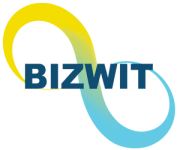Global Process Instrumentation Market is valued at approximately USD XXX billion in 2022 and is anticipated to grow with a healthy growth rate of more than XX% over the forecast period 2023-2030. Process instrumentation refers to the use of various devices and sensors to monitor and control industrial processes. It involves the measurement and control of variables such as temperature, pressure, flow rate, level, and composition within a manufacturing or industrial operation. The primary purpose of process instrumentation is to ensure that industrial processes operate efficiently, safely, and reliably. By accurately measuring and controlling the variables involved in a process, it helps maintain optimal conditions, detect deviations or abnormalities, and make necessary adjustments to maintain desired parameters. The Process Instrumentation market is expanding because of factors such as Increasing government initiatives in wastewater treatment and growing demand for sustainable energy.
These systems are frequently used to monitor and control the processes involved in the treatment of waste and water. These provide information on the state of the water being treated as well. Additionally, the US Environmental Protection Agency (EPA) has stepped up investment in the nation’s decomposing water infrastructure. In November 2022, for instance, the U.S. The City of Pflugerville, Texas, received a grant from the EPA under the Water Infrastructure Finance and Innovation Act (WIFIA) for USD 52 million to fund the project to modernize the water treatment plant. With the WIFIA loan, the EPA is assisting the facility process more drinking water while also maintaining the water’s health using cutting-edge treatment and filter technologies, which is expected to boost the process instrumentation market expansion. In addition, increase in demand from the process industry and rising Modernization and migration services are creating lucrative opportunities for market growth. However, the high cost of Process Instrumentation stifles market growth throughout the forecast period of 2023-2030.
The key regions considered for the Global Process Instrumentation Market study includes Asia Pacific, North America, Europe, Latin America, and Middle East & Africa. North America dominated the market in 2022 owing to factors such as the rising number of wastewater treatment projects, the rising process industry, and the rising demand for energy-efficient solutions in the region. Whereas, Asia Pacific is projected to have the significant growth owing to factors such as rising to the region’s favorable government policies in growing countries such China and India, quickly expanding industrial activity, rising cost pressure, and rising production rate.
Major market player included in this report are:
Honeywell International Inc.
Siemens AG
Omron Corporation
ABB Ltd.
Emerson Electric Company
Rockwell Automation Inc.
Mitsubishi Electric Corporation
Danaher Corporation
Metso Corporation
Yokogawa Electric Corporation
Recent Developments in the Market:
Ø In May 2022, Symphony AI Industrial unveiled its Manufacturing operations management (MOM) 360 is a solution that combines enterprise-level governance with factory execution system (MES) functionality and AI-based workflow optimization. Industry 4.0 intelligent manufacturing’s data-driven process improvement goals were created, and MOM 360 was developed to assist businesses in achieving them.
Global Process Instrumentation Market Report Scope:
ü Historical Data – 2020 – 2021
ü Base Year for Estimation – 2022
ü Forecast period – 2023-2030
ü Report Coverage – Revenue forecast, Company Ranking, Competitive Landscape, Growth factors, and Trends
ü Segments Covered – Instrument, Technology, End-user, Region
ü Regional Scope – North America; Europe; Asia Pacific; Latin America; Middle East & Africa
ü Customization Scope – Free report customization (equivalent up to 8 analyst’s working hours) with purchase. Addition or alteration to country, regional & segment scope*
The objective of the study is to define market sizes of different segments & countries in recent years and to forecast the values to the coming years. The report is designed to incorporate both qualitative and quantitative aspects of the industry within countries involved in the study.
The report also caters detailed information about the crucial aspects such as driving factors & challenges which will define the future growth of the market. Additionally, it also incorporates potential opportunities in micro markets for stakeholders to invest along with the detailed analysis of competitive landscape and product offerings of key players. The detailed segments and sub-segment of the market are explained below:
By Instrument:
Transmitter
Control Valve
By Technology:
Programmable Logic Controller (PLC)
Distributed Control System (DCS)
Supervisory Control and Data Acquisition (SCADA)
Manufacturing Execution System (MES)
By End-user:
Water and Wastewater Treatment
Chemical Manufacturing
Energy & Utilities
Oil and Gas Extraction
Metals and Mining
Other Process Industries
By Region:
North America
U.S.
Canada
Europe
UK
Germany
France
Spain
Italy
ROE
Asia Pacific
China
India
Japan
Australia
South Korea
RoAPAC
Latin America
Brazil
Mexico
Middle East & Africa
Saudi Arabia
South Africa
Rest of Middle East & Africa



